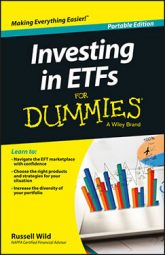Investment legend Benjamin Graham liked to use something called the P/E ratio. The P stands for price; the E stands for earnings. When the market price of a stock (or all stocks) is high, and the earnings (or profits for a company or companies) are low, then you have a high P/E ratio; conversely, when the market price is down but earnings are up, you have a low P/E ratio.
Graham, as well as his student Warren Buffett, preferred to buy when the P/E ratio was low.
If a certain asset class has been seeing returns much, much lower than its historical average, you may want to very slightly overweight that asset class. If, for example, you are considering overweighting U.S. stocks, it makes more sense to do it when U.S. stocks are selling relatively cheaply. Typically, but not always, an asset class may be "selling cheap" after several years of underperforming its historical returns.
Consider tilting your entire stock portfolio, on a permanent basis, toward lower P/E stocks, otherwise known as value stocks. This would not be a permanent tilt but a mild, temporary one. It stands to reason that if value stocks outperform other stocks — and historically they have done just that — if the entire stock market appears to be a value market, then that market may outperform in the foreseeable future.
Recent work by Yale University economist Robert J. Shiller has lent credence to the notion that buying when the P/E ratio is low raises your expected returns. In fact, Shiller has tinkered with the way the P/E ratio is defined so that the earnings part of the equation looks back over a decade (rather than the typical one year) and then factors in inflation.
Shiller's research, based on tracking market returns with varying P/E ratios over the decades, indicates that when his adjusted P/E ratio is low, the stock market is more likely to produce gains over the following decade. When the P/E ratio is high (it reached an all-time high of about 44 in 1999, for example), you may be looking forward to a decade of very low (or no) returns.

